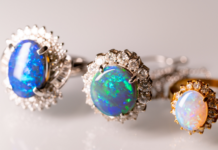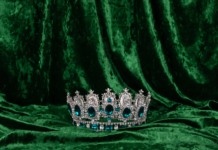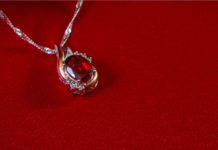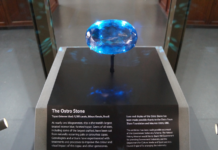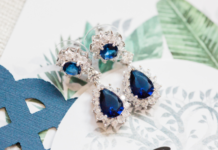Aquamarine is a gorgeous blue-green gemstone that has been cherished by humans for centuries. Its beauty and durability make it an ideal choice for jewelry and decorative items.
In this blog post, we will delve into the history, properties, and uses of aquamarine. We’ll also explore how to identify and care for jewelry, famous aquamarine gemstones, its representation in popular culture, and what it symbolizes.
What is Aquamarine?
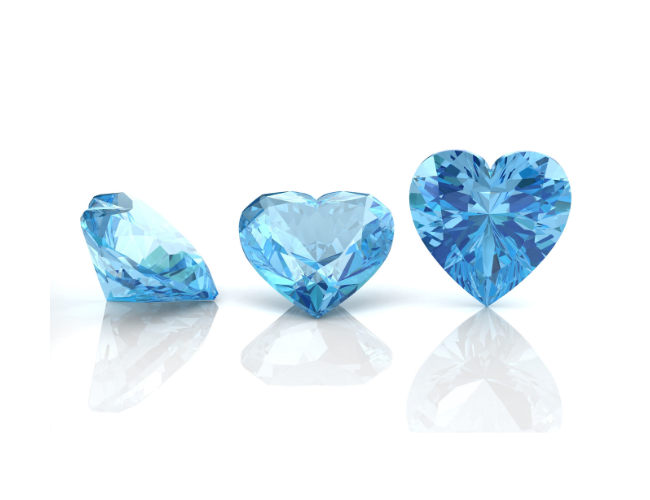
Aquamarine is a member of the beryl family, which includes other well-known gemstones like emeralds and morganite. Its name comes from the Latin words “aqua” meaning water and “marina” meaning sea, which accurately describes its breathtaking blue-green hue.
Aquamarine is considered a semi-precious stone, although high-quality specimens can command a premium price. Its hardness on the Mohs scale is 7.5-8, making it a durable gemstone for everyday wear.
Aquamarine typically forms in granite rocks or pegmatites that were exposed to hydrothermal activity. This process involves hot fluids circulating through the rock, dissolving minerals, and then depositing them in cracks and crevices.
The specific chemical composition of these fluids determines the color of the aquamarine. Iron ions give it its blue-green color, while the presence of more manganese gives rise to pink hues.
The Colors of Aquamarine
While aquamarine’s primary color is blue-green, there are variations in hue depending on the concentration of iron ions and other trace elements present. Some gemstones may exhibit a greenish-yellow hue, while others may have a bluish-gray tint.
Gemstones with no visible inclusions and a deep blue color are considered the most valuable and sought-after.
Properties of Aquamarine
Aquamarine has several unique properties that make it a popular choice for jewelry and decorative items. These include its hardness, clarity, and refractive index.
Hardness
Aquamarine has a hardness of 7.5-8 on the Mohs scale, making it durable enough for everyday wear. However, it’s still important to take care when wearing and cleaning jewelry.
Clarity
Aquamarine is a relatively clear gemstone with no visible inclusions. This clarity allows for maximum light transmission, giving it a brilliant sparkle.
Refractive Index
Aquamarine has a refractive index of 1.577-1.583, which measures how much light bends as it passes through the gemstone. This property is important in determining the stone’s brilliance and fire.
How to Identify Aquamarine
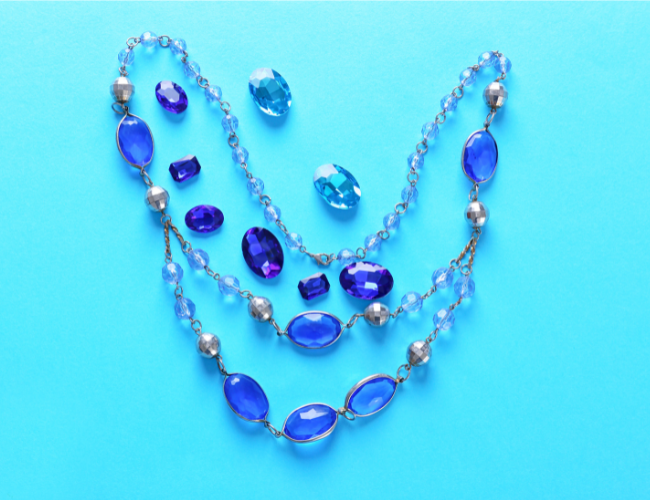
Identifying it can be challenging, as it can look very similar to other stones like blue topaz or blue zircon. Here are some tips to help you identify aquamarine:
- Color: it’s primary color is blue-green, but it may have variations depending on the concentration of trace elements present.
- Hardness: it has a hardness of 7.5-8 on the Mohs scale, which makes it harder than most other gemstones with a similar appearance.
- Refractive index: it has a refractive index of1.577-1.583, which is similar to other beryl gemstones like emeralds and morganite.
Additional Testing
If you’re still unsure whether a stone is aquamarine, there are additional tests you can perform. For example, it has a specific gravity of 2.68-2.74, meaning it’s denser than most other blue stones like blue topaz or blue zircon. You can also test the stone’s reaction to UV light or test its thermal conductivity to help confirm its identity.
Uses of Aquamarine
Aquamarine’s beauty, durability, and rarity make it a popular choice for jewelry, decorative items, and even technology. Here are some common uses of it:
Jewelry
Aquamarine is a popular gemstone for jewelry, including rings, necklaces, earrings, and bracelets. Its calming blue-green color makes it a popular choice for both casual and formal occasions.
Decorative Items
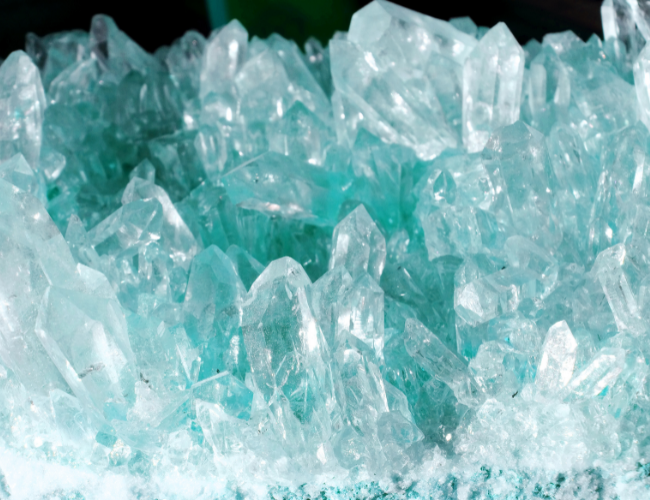
Aquamarine’s beauty isn’t limited to jewelry. It’s also used in decorative items like vases, figurines, and sculptures. Its clear color and high transparency make it an ideal choice for these types of items.
Technology
Aquamarine’s unique properties make it useful in technology as well. For example, its high thermal conductivity makes it useful in heat dissipation systems, and its clarity and refractive index make it useful in optics.
Caring for Jewelry
Like all gemstones, aquamarine requires proper care and maintenance to keep it looking its best. Here are some tips for caring for your jewelry:
- Avoid exposing your jewelry to harsh chemicals or extreme temperatures.
- Clean your jewelry regularly using warm water and mild soap. Be sure to dry it thoroughly afterwards.
- Store your jewelry separately from other jewelry to prevent scratches or damage.
- Have your jewelry professionally cleaned and inspected every few years to ensure it remains in good condition.
Aquamarine in Popular Culture
Aquamarine has been featured in several popular movies and TV shows over the years. Here are a few examples:
Aquamarine
The movie Aquamarine, released in 2006, follows the story of a mermaid who washes up on shore and befriends two young girls. The mermaid wears an aquamarine necklace throughout the film, which is said to have magical powers.
Titanic
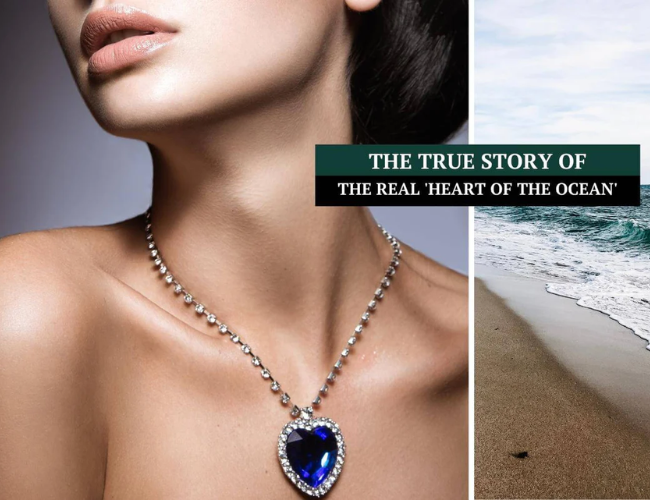
In the movie Titanic, the Heart of the Ocean necklace worn by Kate Winslet’s character Rose is said to be a blue diamond, but in reality, it was actually made from cubic zirconia and set with a large piece of blue-green.
The necklace became an iconic piece of jewelry and helped to popularize it with a wider audience.
Lord of the Rings
In J.R.R. Tolkien’s Lord of the Rings trilogy, the character Legolas is known for carrying a bow made from Mirkwood, which is said to be adorned with a string of blue gems, including aquamarine.
This depiction of it as a mystical gemstone further cemented its association with magic and enchantment.
The Meaning and Symbolism
Aquamarine has been associated with various meanings and symbols throughout history. Here are a few examples:
Tranquility
Due to its calming blue-green color, it has been associated with tranquility, peace, and serenity. It’s often used in meditation and healing practices to promote feelings of calmness and relaxation.
Protection
Several ancient cultures believed that aquamarine had protective properties and could ward off evil spirits and danger. It was often worn as an amulet or talisman for this purpose.
Love and Friendship
In modern times, it has come to be associated with love and friendship. It’s often given as a gift to signify trust, loyalty, and affection between two people.
Conclusion
Aquamarine is a fascinating gemstone with a rich history and several unique properties. From its formation process to its use in technology, there’s much to discover about this beautiful blue-green stone.
Whether you’re wearing it as jewelry or using it in decorative items or technology, aquamarine’s beauty and durability make it a popular choice for many different applications.







